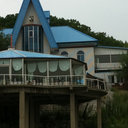Saponins from Panax japonicus attenuate D-galactose-induced cognitive impairment through its anti-oxidative and anti-apoptotic effects in rats.
Keywords
Abstract
OBJECTIVE
To investigate the neuroprotective effects of saponins from Panax japonicus (SPJ) on D-galactose (D-gal)-induced brain ageing, and further explore the underlying mechanisms.
METHODS
SPJ were analysed using high-pressure liquid chromatography. Male Wistar rats weighing 200 ± 20 g were randomly divided into four groups: control group (saline), D-gal-treated group (400 mg/kg, subcutaneously), D-gal + SPJ groups (50, 100 and 200 mg/kg, orally) and vitamin E group (100 mg/kg). Rats were injected corresponding drugs once daily for 8 weeks. Neuroprotective effects of SPJ were evaluated by Morris water maze, histopathological observations, biochemical assays, western blot analysis and quantitative real-time polymerase chain reaction (PCR) analysis in vivo as well as reactive oxygen species (ROS) measurement and apoptosis assay in vitro.
RESULTS
Our present study showed that D-gal had a neurotoxic effect in rats and in SH-SY5Y cells due to oxidative stress induction, including decreased total anti-oxidant capacity, superoxide dismutase (SOD) and glutathione peroxidase activity, ultimately leading to spatial learning and memory impairment in rats and ROS accumulation in SH-SY5Y cells. SPJ improved spatial learning and memory deficits, attenuated hippocampus histopathological injury and restored impaired anti-oxidative as well as anti-apoptotic capacities in D-gal-induced ageing rats. In addition, SPJ remarkably decreased lipofuscin levels, increased hippocampus nuclear factor erythroid 2-related factor 2 (Nrf2) and silent mating type information regulation 2 homologue (SIRT1) protein levels and anti-oxidant genes expression such as manganese superoxide dismutase (Mn-SOD), heme oxygenase (HO-1), NAD(P)H quinone oxidoreductase 1 (NQO1) and cysteine ligase catalytic (GCLC) in D-gal-induced brain ageing.
CONCLUSIONS
Our data suggested that D-gal induced multiple molecular and functional changes in brain similar to natural ageing process. SPJ protected brain from D-gal-induced neuronal injury through decreasing oxidative stress and apoptosis, and ultimately improving cognitive performance in D-gal-induced brain ageing. It is possibly related to Nrf2 and SIRT1-mediated anti-oxidant signalling pathways.




